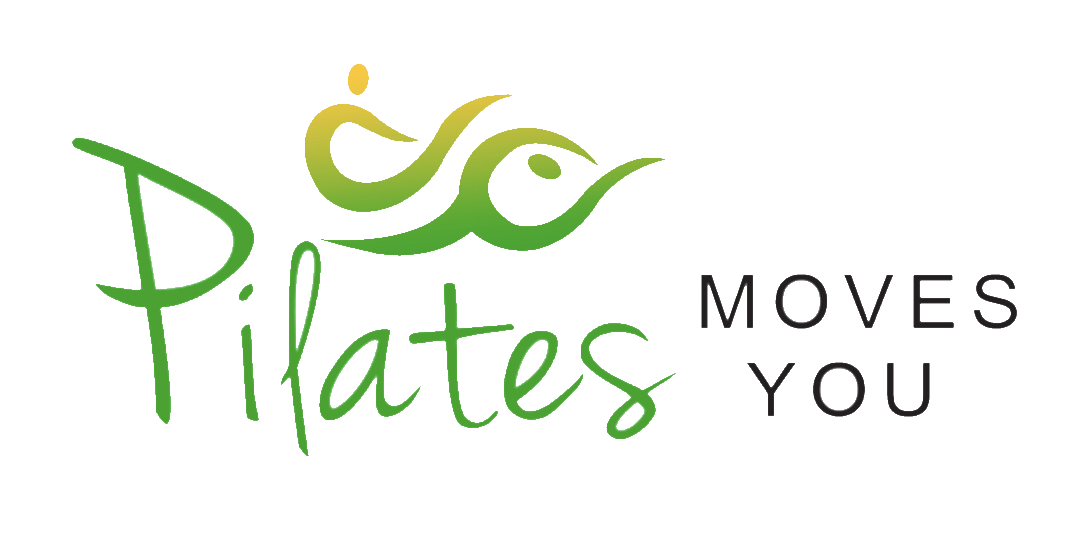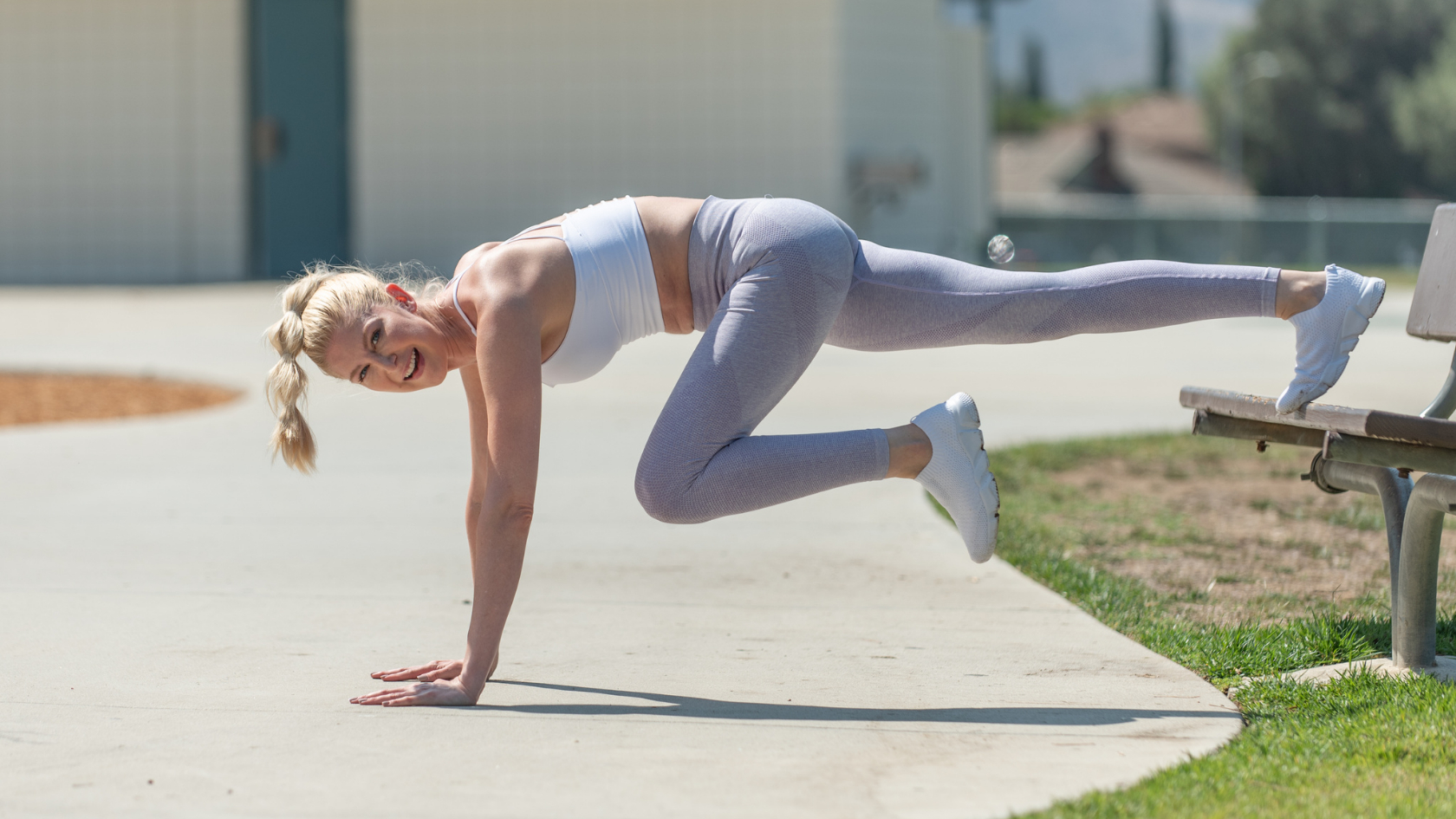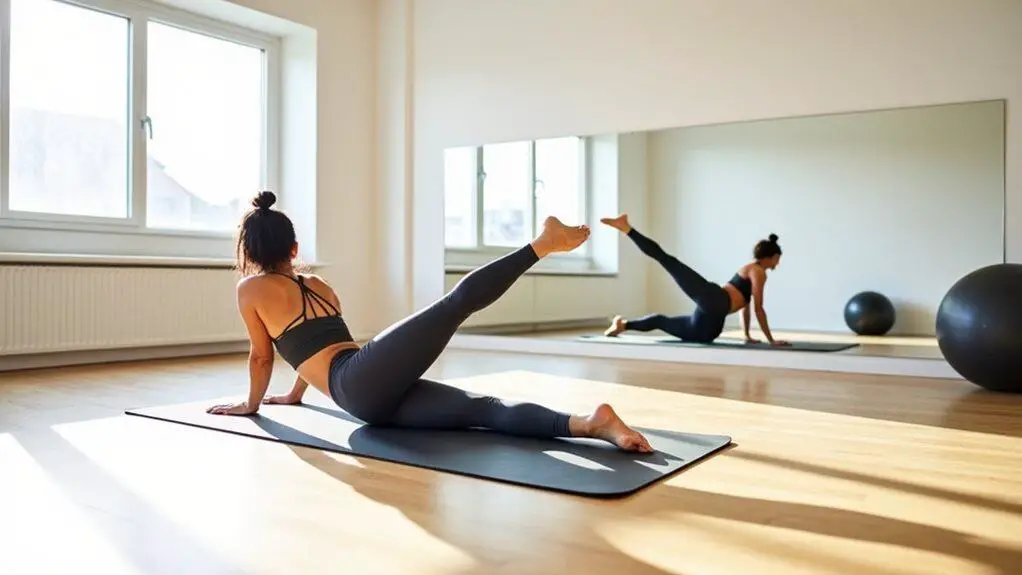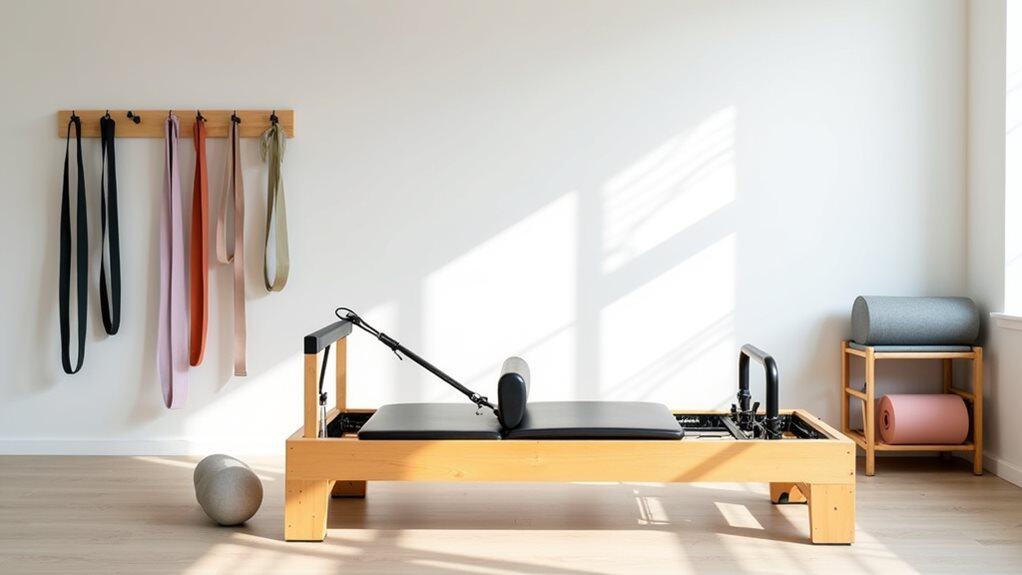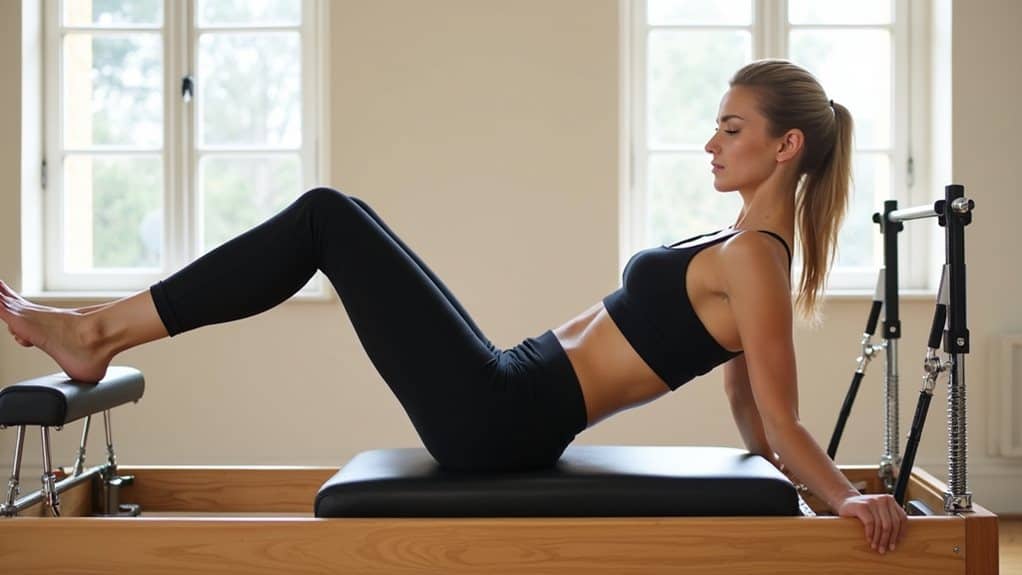Imagine you’re lying on a mat, legs extended and head lifted, your core engaged as you pump your arms vigorously. This is the Pilates Hundred, a staple exercise in the Pilates method, designed to build core strength and endurance.
As you hold your legs in a tabletop position or extended at an angle, you’re not just toning your muscles; you’re enhancing the stability of your entire torso. The Hundred effectively engages your transverse abdominals, rectus abdominis, and obliques, which are crucial for a strong and supportive core.
With consistent practice, you’ll find your posture improving, and daily tasks that rely on core strength—like lifting groceries or standing for long periods—become easier.
Stick with it, and the Pilates Hundred can be a cornerstone of your core conditioning routine.
Understanding the Pilates Hundred
Why haven’t you tried the Pilates Hundred yet, an exercise renowned for its core-strengthening prowess?
The Pilates Hundred Exercise is a classic Pilates exercise focused on core muscles, especially your abdominal muscles, and is a staple in both Physical Therapy and Pilates.
It begins with you lying flat, legs extended, and arms by your sides. Lift your head and shoulders off the ground, engaging your transverse abdominals. Your legs are lifted to a sustainable angle as you start to pump your arms vigorously.
This motion, combined with controlled breathing, promotes core muscle activation, including scapular and trunk stabilization. As your arms pump, you’re not just moving; you’re fortifying the very center of your body, enhancing your overall physical health.
Core Muscles Targeted
Your core’s resilience benefits significantly from the Hundred, as it primarily activates the transverse abdominals, the unsung heroes of your torso’s stability. This classic Pilates mat exercise is a powerhouse for core muscle activation, engaging a suite of muscles crucial for your lower back support and overall major core fortification.
Here’s a breakdown of the core muscles targeted:
- Transversus Abdominis: The deepest layer that wraps around your spine for protection and stability.
- Rectus Abdominis: Known as the ‘six-pack’ muscles, these run along the front of your abdomen.
- Obliquus Internus and Externus: These are your side muscles that aid in rotation and lateral flexion of the spine.
The Pilates Hundred exercise, when performed correctly, ensures a full core engagement, essential for a balanced and strong body.
Benefits for Core Strength
You’ll find that practicing the Pilates Hundred significantly boosts your muscular endurance, especially in your core region.
This exercise also promotes spinal stability, which is essential for maintaining proper posture and reducing the risk of back injuries.
Enhances Muscular Endurance
While practicing the Pilates Hundred, you’ll notice an increase in your muscular endurance, which directly benefits your core strength. This exercise helps you achieve more than just a toned midsection; it enhances the stamina of your muscles, particularly the abdominals. Here’s how the Hundred boosts your muscular endurance:
- Core Muscle Activation: Continuous movement increases the endurance of core muscles, including the deeper transverse abdominals.
- Obliquus Internus Activity: The obliques work throughout the exercise, improving the staying power of these critical stabilizers.
- Whole-Body Engagement: Since the Hundred works muscles in the entire body, it fosters overall muscular endurance, making daily activities easier.
Embrace the challenge of the Pilates Hundred to build a stronger, more enduring core and enjoy the benefits of enhanced muscular endurance throughout your entire body.
Promotes Spinal Stability
Engaging in the Pilates Hundred exercise, you’re directly fortifying your core’s spinal stability, a cornerstone for robust core strength. This precision-driven movement requires core muscle activation that targets not just your abdominals, but also the back, shoulders, and pelvic floor—integral components of your body’s central support system.
In each Pilates class, the Hundred serves as an Analysis of Core Muscle Activity During Pilates Exercises, revealing the strength and endurance of your deep corset muscles.
Utilizing Props and the Different Modified Pilates variations, you can tailor the Hundred to your current fitness level. This ensures continuous challenge without compromising form.
As you breathe rhythmically, inflating and deflating your abdominals and lungs, you’re reinforcing the link between core engagement and spinal stability—vital for injury prevention and everyday activities.
Proper Technique Breakdown
To maximize the benefits of the Pilates Hundred for your core strength, it’s crucial to master the exercise’s technique, starting with your position on the mat. Here’s a proper technique breakdown:
- Begin with the Classic Setup: Lie down with your feet flat, knees bent. A Pilates instructor may advise starting with legs straight or in a tabletop position to challenge your core muscle activation.
- Engage and Lift: Inhale, then as you exhale, curl your head and shoulders off the mat, keeping your chin slightly tucked. Stretch your arms straight by your sides, hovering a few inches above the ground.
- Pump and Breathe: Pump your arms up and down vigorously while breathing in for five counts and out for five counts. Aim to keep your legs slightly lowered to maintain focus on your core, avoiding strain on your shoulders and neck.
Common Execution Errors
Although you might be eager to strengthen your core with the Pilates Hundred, it’s essential to be aware of common execution errors that can undermine its effectiveness. To make the Hundred work for you, focus on precision and control. Here’s a quick guide to avoid common pitfalls and modify the exercise if needed:
| Common Execution Errors | How to Modify |
|---|---|
| Arching the lower back | Keep your feet on the floor |
| Straining the neck | Use a small pillow for support |
| Using back muscles, not abs | Hold your legs with knees bent |
| Holding breath | Breathe steadily, arms made while holding |
Variations and Progressions
As you progress in your Pilates practice, you’ll encounter variations of the Hundred that elevate core engagement and endurance.
Start with modified beginner versions if you’re new or need to address specific physical concerns.
When ready, challenge yourself with advanced techniques that intensify the exercise and further sculpt your core muscles.
Modified Beginner Versions
Your mastery of core stability can commence with modified beginner versions of the Pilates Hundred, designed to accommodate varying levels of fitness and flexibility.
- Head Down, Feet Flat: Start this Pilates move with your head down and feet planted firmly on the floor. This position helps you focus on core muscle activation according to your comfort level.
- Tabletop Legs: As you progress, keep your legs bent at a 90-degree angle, resembling a tabletop. This lessens the strain on your lower back while maintaining effectiveness.
- Use of Props: Modify the hundred by using props like a small pillow under your head for neck support or a cushion under your lower back. Make sure you lower your legs only as far as you can maintain good form.
Advanced Technique Challenges
Building on foundational techniques, you’ll discover that advanced variations of the Pilates Hundred, such as the Legs at 45-Degree Angle and the Hundred With Ball, significantly amplify core engagement and strength.
The benefits of the Hundred are substantial as it develops scapular and trunk stability while simultaneously working to increase heart rate. As a classic exercise, the Hundred is integral for a dynamic warm-up, promoting a strong and graceful physique.
When executed with a Pilates ring, the challenge intensifies, requiring greater coordination and control. Your arms and legs, while lying on your back with your spine flat on the floor, will engage more deeply as you maintain the precision of the movements.
These progressions ensure that your core strength continues to build as you master the subtleties of the Hundred.
Sources
https://www.livestrong.com/article/13778037-pilates-hundred-exercise/
https://www.verywellfit.com/how-to-do-the-pilates-hundred-2704677
https://www.womenshealthmag.com/uk/fitness/workouts/a35130510/how-to-do-the-hundred/
https://www.sciencedirect.com/science/article/pii/S1360859221000796
